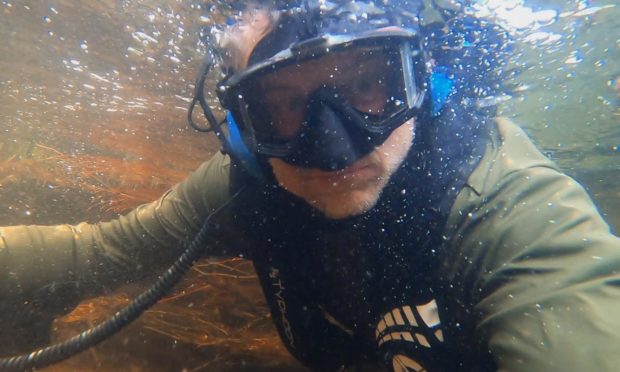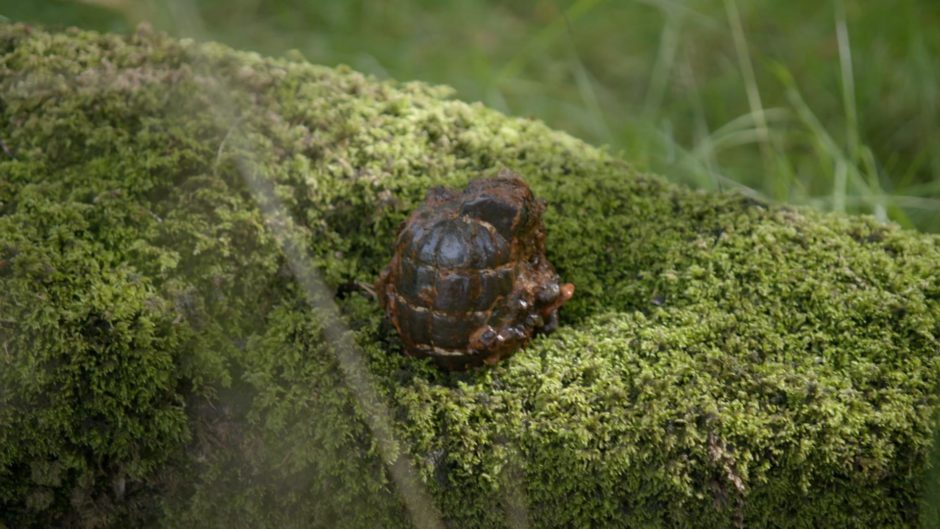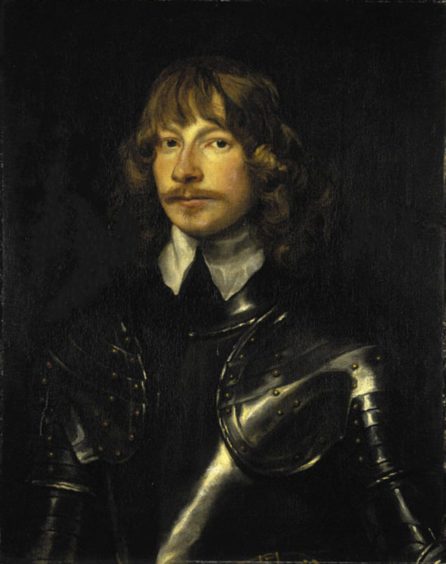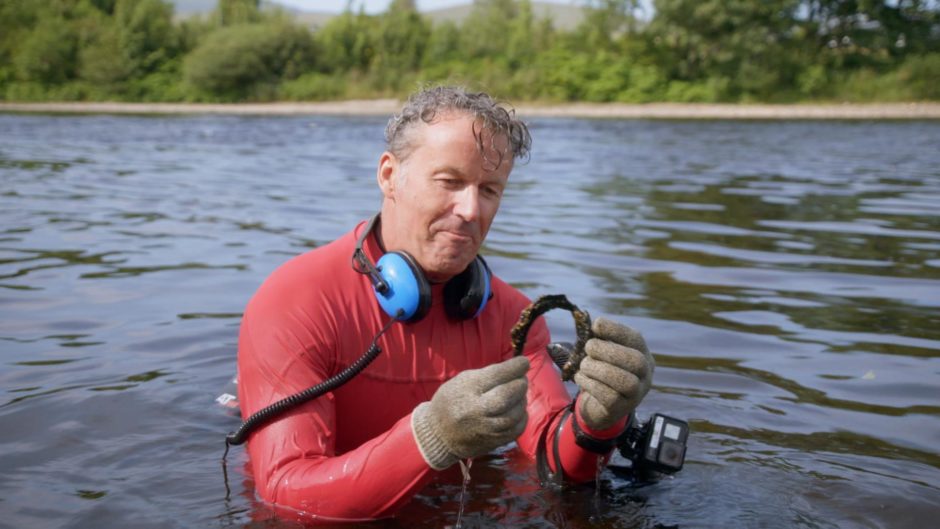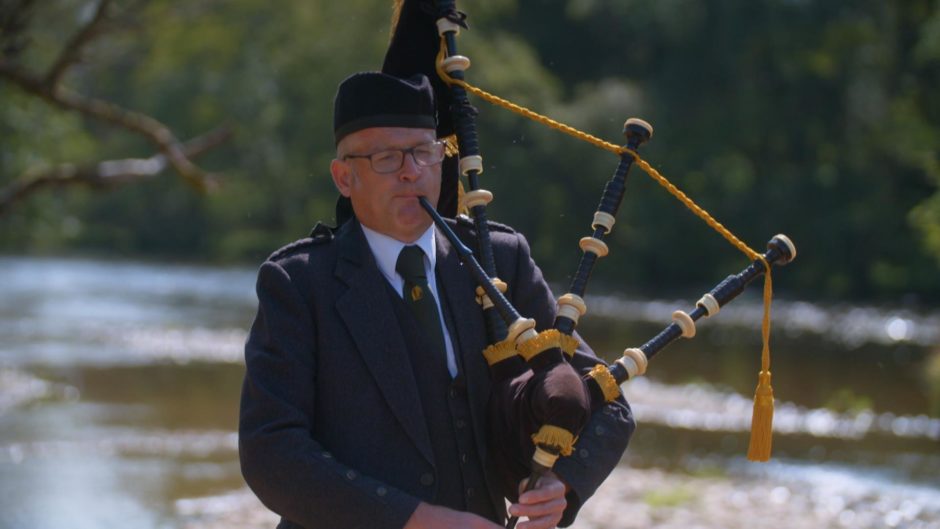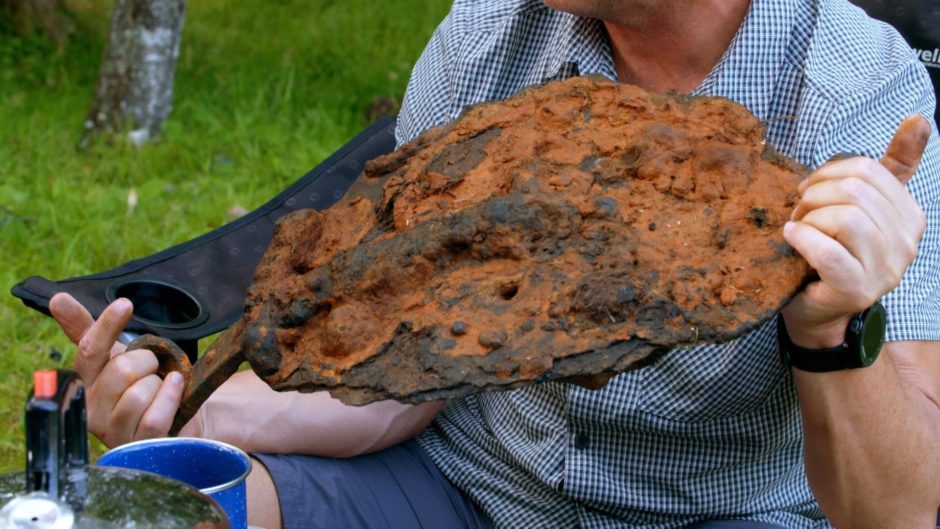A search for battle relics in the Highlands was dramatically cut short when an unexploded grenade was unearthed from the River Arkaig.
Everyone was ordered out of the river while a bomb disposal unit was called in.
When they discovered the grenade was still live, they performed a controlled explosion on the river bank.
The discovery was made in episode three of the Sky History series River Hunters.
The show is presented by river detectorist Beau Ouimette; TV presenter and keen swimmer Rick Edwards; and underwater archaeologist Gary Bankhead.
Live grenades made training realistic for special forces
Achnacarry, the seat of the Cameron clan, located 15 miles north of Fort William, was home to more than 25,000 men during the Second World War.
British commandos, United States Army Rangers and commandos from France, Holland, Norway, Czechoslovakia, Poland and Belgium trained there.
Live grenades were thrown into the River Arkaig to make their training as realistic as possible and pieces of exploded shells had already been found in the river.
Gary said: “The commandos were based at Achnacarry Castle during the Second World War which was much further down stream from where we were searching.
“We thought we were entering a really safe zone and never in my wildest dreams did I expect to find an unexploded hand grenade.
“Beau came across this pineapple grenade and anything can happen.
“You have got to fear the worst and we did the right thing.
“We had to cover all eventualities.”
Sword tip find likely to date from Battle of Inverlochy
Despite their hunt being called off early after the grenade was found, they still found a sword tip likely to date from the clash which was so fierce that the moat and river ran red with blood for days after the fighting.
The River Hunters were searching for evidence of the clashing Scottish clans embroiled in the civil war that raged across the British Isles in the 17th century.
Starting on the River Lochy, situated in the shadow of Ben Nevis, the group hunted for evidence of the 1645 Battle of Inverlochy, part of the Wars of the Three Kingdoms.
James Graham, 1st Marquess of Montrose, leader of a Royalist army, attacked the forces of the Duke of Argyll early on the morning of February 2 1645.
The Duke’s forces were encamped under the walls of old Inverlochy Castle.
Left with 1,500 men, Montrose and his Royalist forces decided to surprise Argyll and his 3,000-strong Covenanter army by marching south around Ben Nevis.
More than half the Covenanter troops died, while Montrose is reputed to have only lost 250 men.
A horse shoe and horse bridle from the late medieval period was also found during the underwater search, which Gary said brought Inverlochy Castle “alive”.
He said: “The battle itself took place over a day and it was done and dusted but for centuries Inverlochy Castle had been there.
“Getting from A to B every day was always done by horse and train.
“But these horses had to be fed and watered and someone would have led these horses away to the river to have a drink and we found some bridal pieces and horse shoes.
“It was wonderful material culture from that time when the castle was a vibrant place and the main thoroughfare through the glens.”
Beau was badly bitten by a swarm of midges
Following one of the victorious Royalist clans’ route home, the team travelled to the River Arkaig, ancestral home to the mighty Clan Cameron, where they pulled up finds showcasing Highland life through the centuries and potential battle relics.
Gary said: “The midges when we searched the River Arkaig were the worst I’ve ever experienced in Scotland and I’m a frequent visitor – they were brutal!
“But I learned a trick a few years ago and Rick joined me.
“If you can get in the part of the river where the sun is then the midges don’t follow.
“Beau was on the other side of the river in the shade and he was really badly bitten but he took it in his stride.”
The skirl of the bagpipes cheered the team on during the search of the River Arkaig which Gary said made the hairs stand up on the back of his neck.
“It was an incredible moment for me that reflected the culture and the history of the entire area,” he said.
“My wife is in love with Outlander and the first series captures the Jacobite uprising and the way the clans linked together across the whole Highland region.
“They just came together on the call to oppose the English and to have suffered such a horrendous defeat at Culloden must have been a catastrophe for them.
“It’s just an amazing piece of history that we don’t have in England.
“The Highland clans have such a long and often bloody history, but it’s one to be immensely proud of.”
A relic from Queen Victoria’s Highland tour
The team also discovered a coal-fire steam boiler door from a sunken boat which Queen Victoria once used to tour the Highlands in.
Queen Victoria wrote about the 1873 Highlands trip in her diary.
SS Rifle was in general service, ferrying goods, passengers and mail between isolated dwellings around the loch until 1938.
At the time she was to be broken up.
The engine was removed, but before breaking up could continue she sank.
The submerged hull then became a hazard to vessels working from the pier when Achnacarry Castle became a training facility.
Commandos used explosives to blast her into deeper water.
Rifle was finally raised in 1990 and the sorry remains are on display at the Scottish Maritime Museum in Irvine.
Gary said: “She reached the loch after being dragged by a horse and cart.
“Eventually she was abandoned so we knew it was the only steam vessel there.
“The remnants of the Rifle has subsequently been recovered and is in a museum in Scotland and that boiler hatch cover is from that steam vessel.
“Commandos blew it up as part of their training and that huge chunk must have gone through the air and landed where we were searching.”
Popular show is being shown on Sky History
The six-part series is currently being shown on Sky History and the team were returning to Scotland following the first show in Highland Perthshire.
That was when Beau pulled the remains of a hand grenade which was thrown at the Battle of Killiecrankie from the River Garry after more than three centuries.
Only one fragment of a grenade of this sort had been unearthed before this since 1689.
The River Hunters are swimming in history exclusively on Sky History with the third episode premiering on Monday April 19 at 9pm.
Sky History is available on Sky 123, NOW TV, Virgin 270 and TalkTalk 327. All episodes will be available on catch up services.
